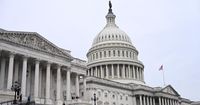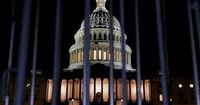As the clock struck midnight on October 1, 2025, the United States government found itself in familiar, yet deeply unsettling, territory: a partial shutdown. The funding lapse—triggered by the failure of both Republican and Democratic senators to agree on rival stopgap spending bills—marked the first such shutdown since December 2018. While shutdowns have become a recurring feature of American politics, this one carries a sharper edge, with President Donald Trump openly threatening to use the moment to shrink the federal workforce and target programs favored by Democrats.
The drama unfolded over weeks of partisan bickering, culminating in a series of failed votes just hours before the deadline. According to Al Jazeera, the Senate rejected a Democratic stopgap bill by a 47-53 margin late on September 30, 2025. The package included an extension of government funding and roughly $1 trillion in health care provisions, notably the permanent extension of enhanced Affordable Care Act (ACA) subsidies set to expire at year’s end. Democrats also sought to undo GOP Medicaid cuts and restore funds clawed back by the White House over the summer. But the bill needed 60 votes to advance, and fell well short.
Republicans, for their part, pushed a so-called “clean” continuing resolution—already passed by the House—to keep the government funded at current levels until November 21, 2025. The measure, backed by virtually all Senate Republicans and President Trump, also failed to clear the 60-vote filibuster threshold, falling five votes short. Only two Democrats, John Fetterman of Pennsylvania and Catherine Cortez Masto of Nevada, as well as Angus King, an independent from Maine, crossed the aisle to support the GOP plan. Even with their support, the bill faltered, leaving the government without funding as the new fiscal year began.
White House Office of Management and Budget Director Russ Vought wasted no time after the failed Senate vote, notifying federal department and agency heads to begin preparations for a shutdown. “Affected agencies should now execute their plans for an orderly shutdown,” Vought wrote in a memo, as reported by The New York Post. The uncertainty over how long the shutdown would last only heightened the sense of crisis in Washington.
At the heart of the stalemate were deep disagreements over health care. Democrats insisted that any stopgap measure must include provisions to extend pandemic-era health insurance subsidies and reverse billions in funding cuts to foreign aid and other programs enacted by Trump. “We asked the leaders to discuss it with us in July, in the middle of August, at the end of August, in September. They refused. And now he says, ‘Give us another 45 days,’” Senate Minority Leader Chuck Schumer said, referencing repeated Republican refusals to negotiate on the expiring ACA credits. “The time to do it is now.”
Republicans, however, rejected the idea of tying health care negotiations to government funding. Senate Majority Leader John Thune argued that the ACA credits could be dealt with separately before the end of the year, and accused Democrats of holding the government hostage to their policy priorities. “We are just 14 hours away from a government shutdown. The House has passed a clean, nonpartisan continuing resolution to fund the government until November the 21st. The president is ready to sign it. Senate Democrats are standing in the way,” Thune declared on the Senate floor, as quoted by Nexstar Media.
Behind the scenes, efforts to bridge the divide floundered. Schumer and House Minority Leader Hakeem Jeffries had long sought meetings with Thune and House Speaker Mike Johnson, but were consistently rebuffed. The Republican leaders insisted there was nothing to negotiate on the “clean” package, pointing out that Democrats had voted for such measures more than a dozen times in recent years. The deadlock finally brought both sides to the White House on September 29, where President Trump presided over a tense meeting. But no deal emerged, and Schumer later admitted that “large differences” remained.
President Trump, never one to shy away from the spotlight or from provocation, quickly took to social media after the failed negotiations. He posted several photographs of the Oval Office meeting, complete with “Trump 2028” hats on his desk, and released AI-generated videos mocking Hakeem Jeffries. In a particularly pointed warning, Trump told reporters, “We can do things during the shutdown that are irreversible, that are bad for them and irreversible by them, like cutting vast numbers of people out, cutting things that they like, cutting programs that they like.” He added, “A lot of good can come from government shutdowns.”
These threats prompted concern and condemnation from some quarters. Richard Painter, former chief White House ethics lawyer under President George W. Bush, told Al Jazeera that Trump’s threats were “typical of President Trump’s strong-arm tactics.” Painter added, “Some of what he is threatening, he may be able to do, but much of it is not authorized by Congress, including firing federal workers with civil service job protection.”
The immediate effects of the shutdown are being felt across the federal government. Non-essential services—including the publication of key economic data and loan approvals for small businesses—have come to a halt. Essential workers such as law enforcement officers, military personnel, and air traffic controllers remain on the job, but without pay for the duration of the shutdown. Social Security, Medicare, Medicaid, and food assistance programs will continue to operate, as confirmed by The New York Post. Non-essential federal employees, however, are being furloughed or forced to work without pay, with the promise of retroactive compensation once the shutdown ends.
House Speaker Mike Johnson warned of the consequences during an appearance on CNBC, noting, “Troops won’t be paid. TSA agents won’t be paid. The WIC program—the Women, Infants and Children nutrition program—and other food services will be delayed. FEMA services won’t be provided. We have two hurricanes off the coast of the United States right now. I mean, we’re in the middle of hurricane season. This is serious stuff.”
Public opinion is squarely against the shutdown. A New York Times/Siena poll found that 65% of registered voters opposed shutting down the government, even if Democrats’ demands were not met. The opposition was broad-based, with 43% of Democrats, 59% of independents, and a whopping 92% of Republicans against a shutdown under any circumstances.
As the blame game intensifies, both parties are pointing fingers. Schumer has called the shutdown a “Republican shutdown,” accusing the GOP of failing to protect Americans’ health care. Republicans, meanwhile, argue that Democrats are endangering benefit programs and public safety by voting down the short-term spending bill. As Thune put it, “This is a routine thing. This is not unusual.” Yet, for federal workers and millions of Americans who rely on government services, there’s nothing routine about the uncertainty and hardship that comes with a government shutdown.
With lawmakers vowing to try again, and the stakes mounting by the hour, the nation waits to see whether compromise can be found—or whether this shutdown will set a new benchmark for political brinkmanship in Washington.





